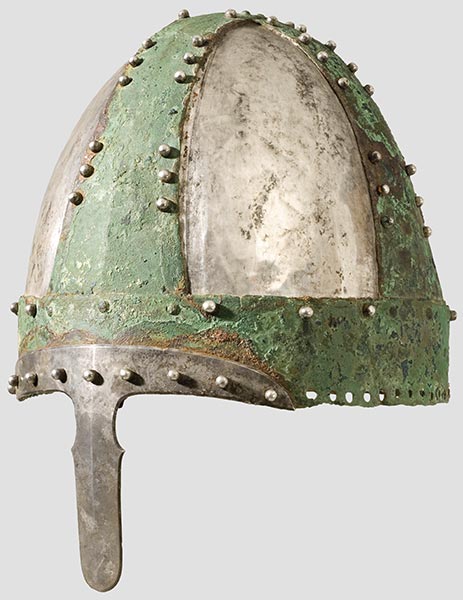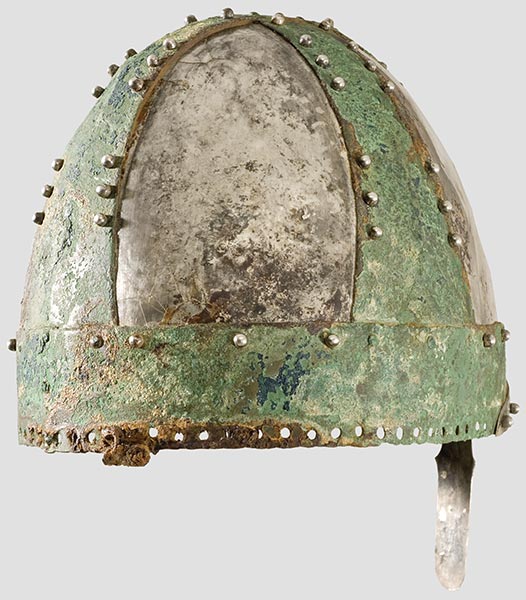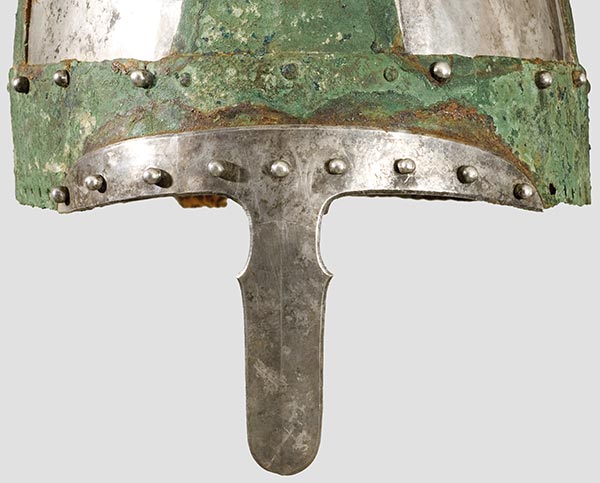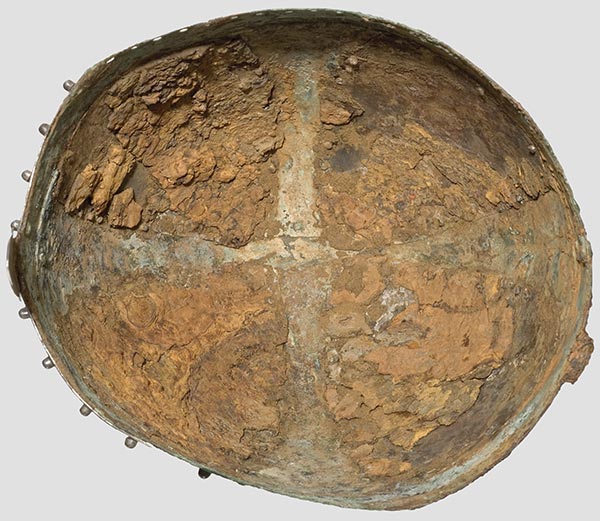Please note that the photos and description below is copyrighted by Hermann Historica
A princely "Spangenhelm"
Central and Eastern Europe, 5th - 6th century A.D.
Bronze, calotte-shaped, segmented helmet with riveted silver plates. The pierced forehead band and the two straps of embossed bronze plate pinned with flat bronze rivets. The vertical segments are ridged. There are remnants of the former iron mail neck curtain. Silver segments of very thin high quality silver sheeting are fastened to the bands with large knobbed rivets. Only rusted remnants of the iron reinforcements for the silver have been preserved in the interior (originally the iron plates extended beyond the bronze forehead band and were bent back over the outside.) There are remnants of zigzag decoration on two silver plates (left front and right rear). A longish nasal of massive and equally high quality silver. There was a wave shaped decorative iron plate above the nasal, detectable from traces of oxidation. No indication of cheekpieces or of interior lining. Height 23.5 cm. Weight 705 grams.
Very good state of preservation with numerous pieces showing loss by rust and oxidation. The former small holes in the silver plates have been inconspicuously filled with a silver/resin mixture. Essentially, it has only been cleaned and properly protected from further corrosion.
Helmets from the fringes of the Roman Empire, the so-called Barbaricum, are extremely rare, as only the highest level of barbarian nobility possessed them. This light and expensive version corresponds to the helmet of a high dignitary, not a battle helmet.
Spangenhelms appeared mostly between the 5th and late 6th centuries A.D. widely distributed between the Rhine and the western fringes of the Eurasian steppe region. (Text Dr. Bodo Anke, Berlin).

© Hermann Historica

© Hermann Historica

© Hermann Historica

© Hermann Historica